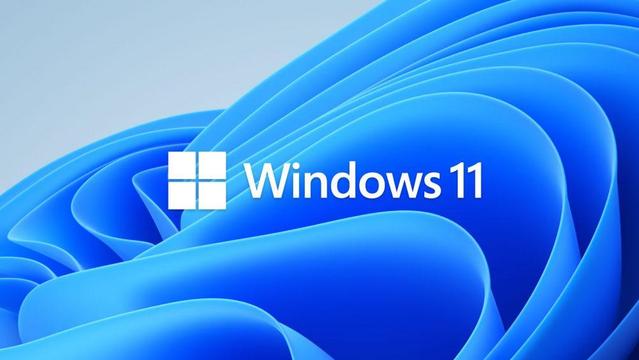#Windows :windows: integriert #Sysmon nativ | Security https://www.heise.de/news/Sysmon-wird-Windows-Bestandteil-11084871.html #Windows11 #WindowsServer2025 #Sysinternals #SysinternalsSuite
#Sysinternals
https://winbuzzer.com/2025/11/18/microsoft-integrates-system-monitor-sysmon-into-windows-11-xcxwbn
Microsoft Integrates System Monitor (Sysmon) into Windows 11
#Windows11 #Sysmon #CyberSecurity #InfoSec #Microsoft #WindowsServer #Sysinternals #BlueTeam #ThreatHunting #EdgeAI #WindowsUpdate
ZoomIt v9.10, ProcDump 3.5 for Linux, and jcd 1.0.1 | Sysinternals
buff.ly/UCS94Wf
#devtools #sysinternals #windows #linux
ZoomIt v9.10, ProcDump 3.5 for...
ZoomIt v9.10, ProcDump 3.5 for Linux, and jcd 1.0.1 | Sysinternals
quicktipp #103: inspecting the permissions of a named pipe on Windows with sysinternals `accesschk.exe`.
https://learn.microsoft.com/en-us/sysinternals/downloads/accesschk
#windows #sysinternals #namedpipe #winio #docker #microsoft #acl #sddl #powershell
🖥️ “Big Brother is Watching!” by Bartek Bielawski taught how to troubleshoot client machines remotely using #PowerShell without disrupting users:
🧰 #Sysinternals (Handle, Procmon, RAMMap)
📡 #pktmon > netsh
🧪 Smart prep = zero friction
🎟️ psconf.eu
#RemoteSupport #PSConfEU
- YouTube
Oh, finally!
I find it *hella* annoying that #Windows is smart enough to tell me that there's a running program that is keeping me from ejecting a USB disk. ...WITHOUT telling me which bloody program it is.
So apparently, the trick is to use #Sysinternals Process Explorer and use the Find Handle feature.
And the answer is... #Dropbox? Fucking *Dropbox*? I *specifically* told Dropbox to not touch drives. Why would it even be doing that??? What's *wrong* with cloud storage service developers? I swear none of the apps work logically and all of them are janky as f
A Linux version of the Procmon Sysinternals tool
https://github.com/microsoft/ProcMon-for-Linux
#HackerNews #Linux #Procmon #Sysinternals #Tool #Microsoft #GitHub
🖥️ “Big Brother is Watching!” by Bartek Bielawski taught how to troubleshoot client machines remotely using #PowerShell without disrupting users:
🧰 #Sysinternals (Handle, Procmon, RAMMap)
📡 #pktmon > netsh
🧪 Smart prep = zero friction
🎟️ psconf.eu
#RemoteSupport #PSConfEU
- YouTube
Identify Which Process Is Blocking a File in Windows | by Orin Thomas.
buff.ly/3jll5QS
#sysinternals #windows #utilities #poweruser #itpro
Identify Which Process Is Bloc...
Identify Which Process Is Blocking a File in Windows | by Orin Thomas.
Linus Torvalds and Bill Gates Meet for the First Time
In a surprising turn of events, Microsoft co-founder Bill Gates and Linus Torvalds, the creator of the Linux kernel, recently met for the first time. The historic encounter took place at a dinner hosted by Sysinternals' creator Mark Russinovich.
This rare moment brought together icons from Linux and Windows, with Microsoft’s Dave Cutler also meeting Torvalds for the first time. As Russinovich humorously noted in a LinkedIn post, “No major kernel decisions were made.” https://www.linkedin.com/posts/markrussinovich_i-had-the-thrill-of-a-lifetime-hosting-dinner-activity-7341857033932914691-f5Kw/
#Linux #LinuxKernel #Windows #BillGates #Linus #LinusTorvalds #MSFT #Microsoft #Tech #Technology #RareMoment #TechWorld #OperatingSystem #OS #Kernel #Sysinternals #DaveCutler
ProcDump 3.4.1 for Linux and Sysmon 1.3.5 for Linux now available.
techcommunity.microsoft.com/blog/sysinte...
#sysinternals #utilities #linux #devtools
ProcDump 3.4.1 for Linux and S...
ProcDump 3.4.1 for Linux and Sysmon 1.3.5 for Linux now available.
EPISODE 10 - Scott & Mark Learn To... Zoomit with Scott Hanselman & Mark Russinovich | Wed at 12:15pm EST.
https://www.youtube.com/watch?v=8WEoZ646Ikk
#zoomit #sysinternals #windows #devtools
EPISODE 10 - Scott & Mark Lear...
EPISODE 10 - Scott & Mark Learn To... Zoomit with Scott Hanselman & Mark Russinovich | Wed at 12:15pm EST.
ZoomIt in PowerToys v0.88, ProcDump 3.4 for Linux, and Sysmon 1.3.4 for Linux.
https://techcommunity.microsoft.com/blog/sysinternals-blog/zoomit-in-powertoys-v0-88-procdump-3-4-for-linux-and-sysmon-1-3-4-for-linux/4371818
#sysinternals #powertoys #zoomit #linux #windows
ZoomIt in PowerToys v0.88, Pro...
#BSI WID-SEC-2025-0231: [NEU] [UNGEPATCHT] [mittel] #Microsoft #SysInternals: Schwachstelle ermöglicht Codeausführung
Ein lokaler Angreifer kann eine Schwachstelle in Microsoft SysInternals ausnutzen, um beliebigen Programmcode auszuführen.
https://wid.cert-bund.de/portal/wid/securityadvisory?name=WID-SEC-2025-0231
ZoomIt v9.0 from Sysinternals.
This release adds drawing and annotation on top of live windows and the desktop.
https://techcommunity.microsoft.com/blog/sysinternals-blog/zoomit-v9-0/4358021
#windows #powerusers #sysinternals #utilities
Announcing ZoomIt v9.0 with LiveDraw and LiveZoom
No more freezing before sketching/writing. Now you can write/draw on the Windows desktop & over applications that are actively moving on the screen.
And it's still free! 😁
https://techcommunity.microsoft.com/blog/sysinternals-blog/zoomit-v9-0/4358021

![# this is Docker's named pipe on Windows:
# \\.\pipe\docker_engine
# let's display its permissions with
# `accesschk.exe` from http://microsoft.com/sysinternals
# using the `\pipe\<name>` path over `\\.\pipe\<name>`
# avoids opening the pipe, which can cause problems
# compact summary
PS> accesschk.exe -nobanner -accepteula \pipe\docker_engine \\.\Pipe\docker_engine
RW BUILTIN\Administrators
RW NT AUTHORITY\SYSTEM
RW mycomputer\docker-users
# (the gist of it: the `docker_engine` pipe grants ReadWrite permissions to the local Windows group `docker-users`.)
# the exact SDDL
PS> accesschk.exe -nobanner -accepteula -L \pipe\docker_engine \\.\Pipe\docker_engine_windows
O:BAD:P(A;;FA;;;BA)(A;;FA;;;SY)(A;;0x12019f;;;S-1-5-21-2792129516-4286106307-505588360-1006)
# verbose
PS> C:\tools\accesschk.exe -nobanner -accepteula -lv \pipe\docker_engine_windows\\.\Pipe\docker_engine
DESCRIPTOR FLAGS:
[SE_DACL_PRESENT]
[SE_DACL_PROTECTED]
[SE_SELF_RELATIVE]
OWNER: BUILTIN\Administrators
[0] ACCESS_ALLOWED_ACE_TYPE: BUILTIN\Administrators
FILE_ALL_ACCESS
[1] ACCESS_ALLOWED_ACE_TYPE: NT AUTHORITY\SYSTEM
FILE_ALL_ACCESS
[2] ACCESS_ALLOWED_ACE_TYPE: mycomputer\docker-users
FILE_ADD_FILE
FILE_CREATE_PIPE_INSTANCE
FILE_APPEND_DATA
FILE_LIST_DIRECTORY
FILE_READ_ATTRIBUTES
FILE_READ_DATA
FILE_READ_EA
FILE_WRITE_ATTRIBUTES
FILE_WRITE_DATA
FILE_WRITE_EA
[...]](https://files.mastodon.social/media_attachments/files/115/282/066/716/115/370/small/aa0a8893fb02c9a0.png)
